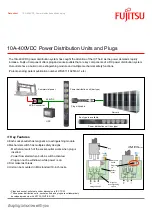
OUTPUT LOAD-SHEDDING
Load-Shedding:
Allows you to turn on load-shedding for the selected output. Load-shedding
automatically disables DC power to the output when the system voltage drops below the load-shedding
threshold voltage.
The system voltage must remain below the load-shedding threshold voltage for at least 30 seconds
before the output will be disabled. This is to prevent the outputs from being disabled prematurely during
a power surge.
Load-Shedding Threshold:
Enter the load-shedding threshold voltage for the selected output.
Load-Shedding Auto Recovery:
If this box is checked, outputs that have load-shedding turned on will
automatically be enabled after the system voltage rises above the load-shedding recovery voltage.
The system voltage must remain above the load-shedding recovery voltage for at least 60 seconds
before the output will be enabled. If this box is unchecked, outputs will need to be manually re-enabled
after load-shedding is triggered.
Auto Recovery Threshold:
Enter the load-shedding recovery voltage for the selected output. The value
in this field must be at least 0.50V higher than the load-shedding threshold voltage.
OUTPUT OVER-CURRENT ALARM
Over-Current Threshold:
If the current on the selected output rises above the value in this field, the
output over-current alarm will trigger.
The output current must remain above the over-current threshold for at least 5 seconds before the
alarm will be triggered.
To disable this alarm, set the value in this field to 0 Amps.
Activate Alarm Form C Contact:
If this box is checked, the Alarm Form “C” Contacts on the panel will
indicate a fault condition when the over-current alarm is triggered for the selected output.
Send E-mail:
If this box is checked, an e-mail alarm notification will be sent when the over-current
alarm is triggered for the selected output. The e-mail settings on the
E-mail Setup
page must be
configured correctly before e-mail notifications can be sent.
14
Summary of Contents for ICT180S-12IRC
Page 2: ......








































